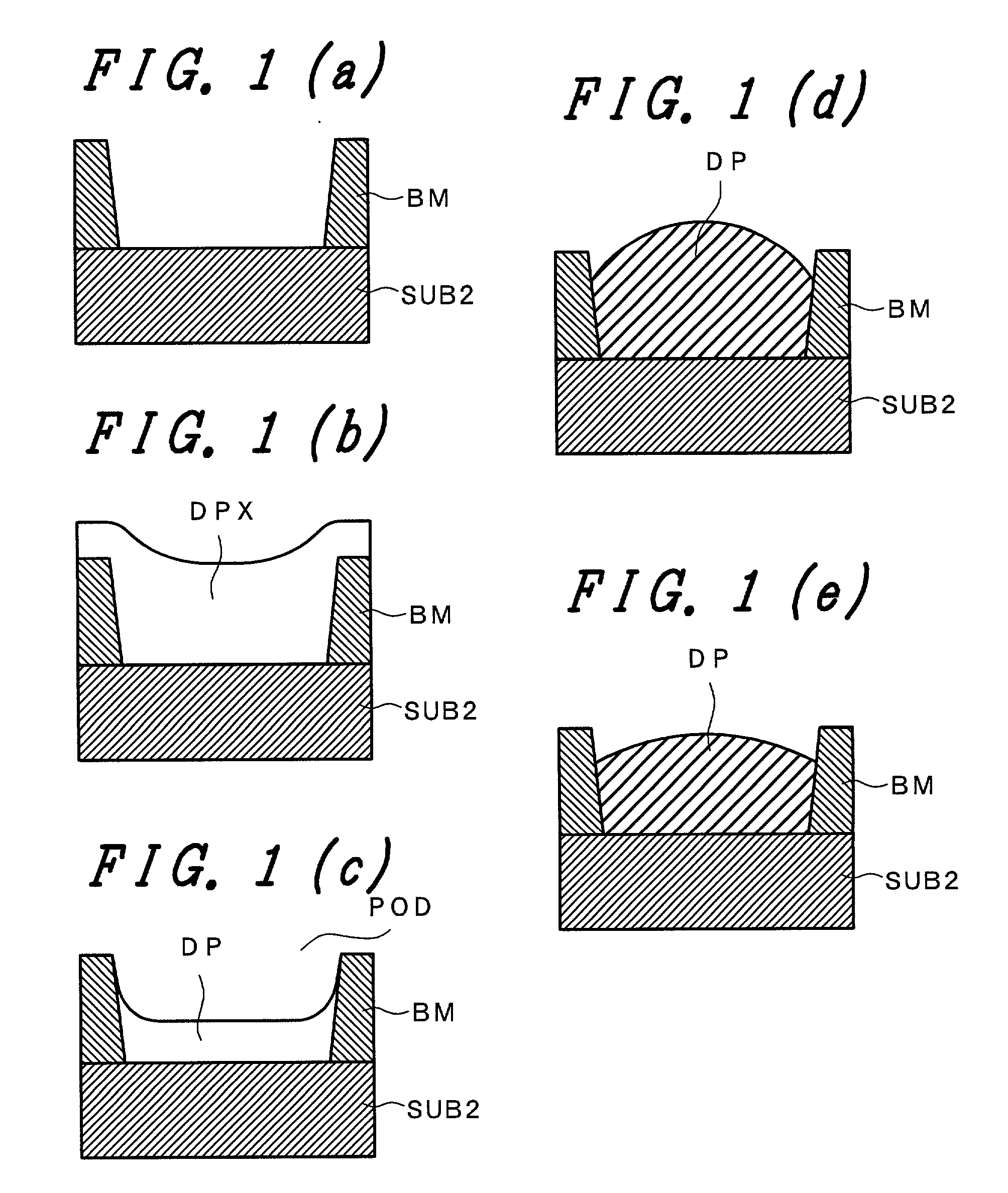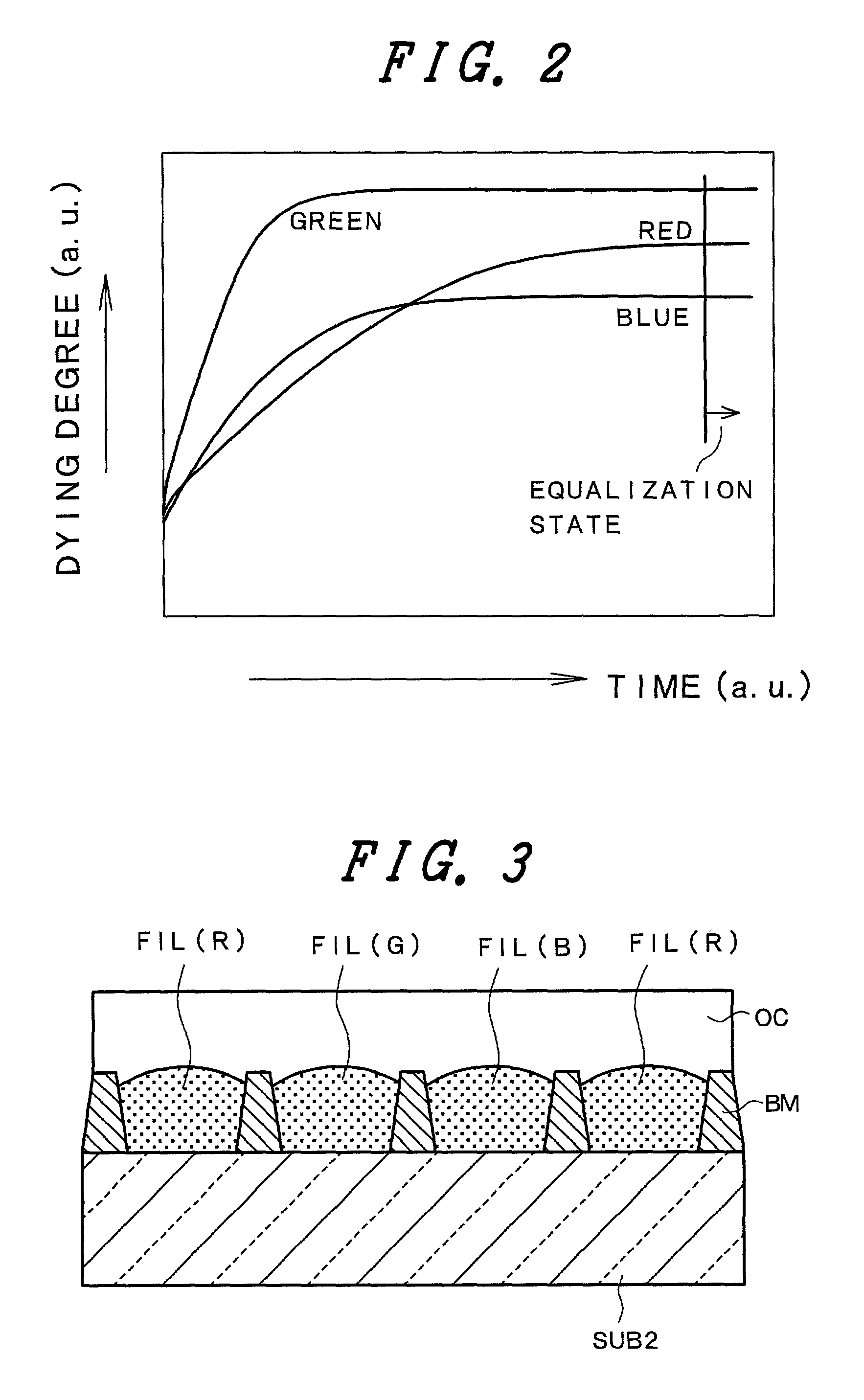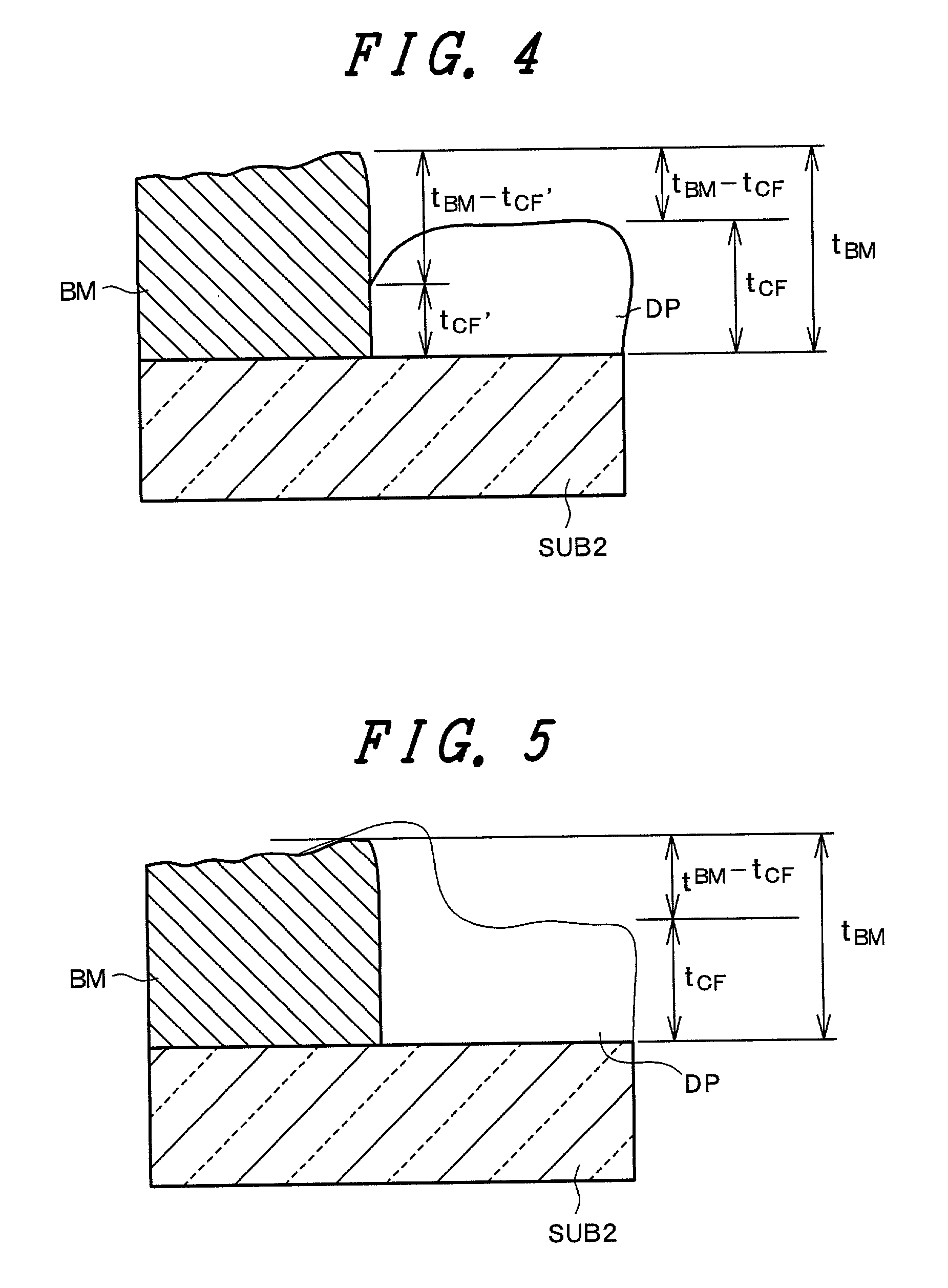Method of manufacturing color filters and liquid crystal display device using these color filters
a technology of color filters and liquid crystal display devices, which is applied in the direction of photomechanical treatment originals, identification means, instruments, etc., can solve the problems of cumbersome process, limited product enhancement throughput, and difficult to uniformly diffuse dye into the dyed substra
- Summary
- Abstract
- Description
- Claims
- Application Information
AI Technical Summary
Benefits of technology
Problems solved by technology
Method used
Image
Examples
first embodiment
[0139] FIG. 10 is a schematic process view for explaining a color filter manufacturing method according to the present invention. In this embodiment, partition walls are formed of a black matrix made of a resin material for every pixels (pixel regions corresponding to color filters in respective colors). In aperture portions formed by these partition walls, indentations (ink reservoirs) are formed by dyed substrates to enable the supply of ink.
[0140] That is, on a first main surface of a glass substrate which constitutes a color filter substrate, a resist which disperses a black material such as graphite or metal oxide or the like in polymeric resin is coated. The resist is exposed through an exposure mask and developed to form a black matrix BM having given apertures (process-1, hereinafter abbreviated to P-1). In this embodiment, the film thickness of the black matrix BM is 1.4 .mu.m and its optical density (OD value) is 3.7. As the material of the black matrix BM, "BK series" pro...
second embodiment
[0173] FIG. 13 is a schematic process view for explaining a color filter manufacturing method of the present invention. In this embodiment, a negative-type photosensitive resin (color resist) which is preliminarily colored with pigment or dye is used. With the use of this photosensitive resin, a substrate which forms color filters corresponding to pixels in three colors by a photolithography process is obtained.
[0174] In this embodiment, a photosensitive color resist which disperses carbon as black pigment is coated on a first main surface of a color filter substrate SUB2 and then a patterning of the color resist is performed to form apertures of a black matrix BM (FIG. 13(a)).
[0175] Color resists REG (R), REG (G), REG (B) in respective colors are supplied into the apertures of the black matrix BM by an ink jet method. In supplying the color resists by the ink jet, it is difficult to control the color resists in respective colors at high accuracy for every apertures (pixels). Accord...
fifth embodiment
[0205] With the above-mentioned fourth and fifth embodiment, the color filters having given color tones can enhance the flatness of their upper surfaces so that the color filter substrate having a favorable surface flatness can be obtained with coating of the thin overcoat.
PUM
| Property | Measurement | Unit |
|---|---|---|
| thickness | aaaaa | aaaaa |
| OD | aaaaa | aaaaa |
| thickness | aaaaa | aaaaa |
Abstract
Description
Claims
Application Information
 Login to View More
Login to View More - R&D
- Intellectual Property
- Life Sciences
- Materials
- Tech Scout
- Unparalleled Data Quality
- Higher Quality Content
- 60% Fewer Hallucinations
Browse by: Latest US Patents, China's latest patents, Technical Efficacy Thesaurus, Application Domain, Technology Topic, Popular Technical Reports.
© 2025 PatSnap. All rights reserved.Legal|Privacy policy|Modern Slavery Act Transparency Statement|Sitemap|About US| Contact US: help@patsnap.com



